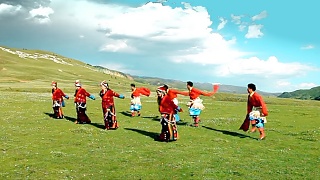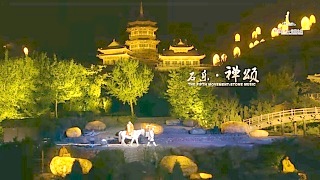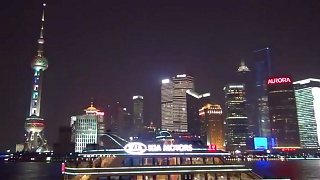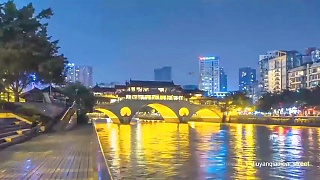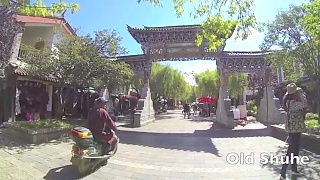Overview
ShenZhen (深圳) is a modern metropolis located in Guangdong Province, bordering Hong Kong. It's renowned as a major tech hub and a gateway to China's manufacturing industry. The city's skyline is dominated by sleek skyscrapers, reflecting its status as a global innovation center.
Top Attractions
- Splendid China Folk Village (锦绣中华民俗村) - Jǐnxiù Zhōnghuá Mínsú Cūn
- Window of the World (世界之窗) - Shìjiè Zhī Chuāng
- Dameisha Beach (大梅沙海滨公园) - Dàméishā Hǎibīn Gōngyuán
- Lianhua Mountain Park (莲花山公园) - Liánhuā Shān Gōngyuán
- Shenzhen Museum (深圳博物馆) - Shēnzhèn Bówùguǎn
- Dafen Oil Painting Village (大芬油画村) - Dàfēn Yóuhuà Cūn
- Nanshan Cultural Tourist Zone (南山文化旅游区) - Nánshān Wénhuà Lǚyóu Qū
- Shenzhen Bay Park (深圳湾公园) - Shēnzhèn Wān Gōngyuán
- Shenzhen Safari Park (深圳野生动物园) - Shēnzhèn Yěshēng Dòngwùyuán
Tech and Innovation
- Huaqiangbei Electronics Market (华强北电子市场) - Huáqiángběi Diànzǐ Shìchǎng
- Shenzhen Bay Tech Ecological Park (深圳湾科技生态园) - Shēnzhèn Wān Kējì Shēngtài Yuán
- Tencent Seafront Towers (腾讯滨海大厦) - Téngxùn Bīnhǎi Dàshà
- DJI Flagship Store (大疆旗舰店) - Dàjiāng Qíjiàn Diàn
Shopping and Dining
- Coco Park and OCT-LOFT (coco park 和 华侨城创意文化园区) - Huáqiáo Chéng Chuàngyì Wénhuà Yuánqū
- Dongmen Pedestrian Street (东门步行街) - Dōngmén Bùxíng Jiē
- OCT-LOFT Creative Culture Park (华侨城创意文化园区) - Huáqiáo Chéng Chuàngyì Wénhuà Yuánqū
- Laojie (Old Street) in Luohu (罗湖老街) - Luóhú Lǎojiē
Nightlife and Entertainment
- Shekou Sea World (蛇口海上世界) - Shékǒu Hǎishàng Shìjiè
- Futian and Luohu Districts (福田和罗湖区) - Fútián hé Luóhú Qū
- Coco Park and OCT Bay (coco park 和 华侨城创意文化园区) - Huáqiáo Chéng Chuàngyì Wénhuà Yuánqū
- Shenzhen Concert Hall (深圳音乐厅) - Shēnzhèn Yīnyuètīng
Practical Tips
- Transportation: Utilize Shenzhen's efficient metro system and ride-hailing apps.
- Language: Learn basic Mandarin phrases for easier communication.
- Safety: Be cautious of pickpocketing in crowded areas.
- Visa: Check China's visa policy based on your nationality.
- Currency: Use local currency (Renminbi) for transactions.
- Weather: Pack accordingly for Shenzhen's subtropical climate.
Hidden Gems
- Wutong Mountain (梧桐山) - Wútóng Shān
- Dapeng Ancient City (大鹏古城) - Dàpéng Gǔchéng
- Guangdong Hakka Museum (广东客家博物馆) - Guǎngdōng Kèjiā Bówùguǎn
Additional Dining Recommendations
- Dim Sum: Experience authentic Cantonese dim sum.
- Seafood: Indulge in fresh seafood in Shekou.
- Street Food: Explore Dongmen Food Street for local snacks.
By exploring these attractions, dining spots, and practical tips, you'll have a comprehensive guide to experiencing Shenzhen's rich blend of culture, technology, and natural beauty.
Shenzhen is a modern metropolis located in Guangdong Province, bordering Hong Kong to the south. Known as China's first Special Economic Zone, Shenzhen has transformed from a fishing village into a bustling city known for its innovation, technology, and vibrant culture. Here's what you need to know as a tourist visiting Shenzhen:
Modern Landmarks and Skyscrapers:
Shenzhen Bay Park: This expansive waterfront park offers stunning views of Shenzhen's skyline and the Hong Kong skyline across the bay. It's a popular spot for leisurely strolls, cycling, and picnics.
Shenzhen Civic Center: Admire the futuristic architecture of the Shenzhen Civic Center, which includes landmarks such as the Shenzhen Concert Hall, Shenzhen Library, and Shenzhen Museum.
Ping An Finance Centre: Marvel at one of the tallest skyscrapers in China and the fourth-tallest in the world, featuring an observation deck on the 116th floor offering panoramic views of the city.
Theme Parks and Entertainment:
Window of the World: Explore miniature replicas of famous landmarks from around the world, including the Eiffel Tower, the Taj Mahal, and the Great Wall of China, all in one place.
Happy Valley: This amusement park offers thrilling rides, live entertainment, and themed areas catering to visitors of all ages, making it a popular destination for families and thrill-seekers.
Shopping and Dining:
Huaqiangbei Electronics Market: Known as the world's largest electronics market, Huaqiangbei is a paradise for tech enthusiasts, offering everything from gadgets and components to accessories and repairs.
Coco Park: This upscale shopping and dining district features a wide range of boutiques, department stores, restaurants, bars, and cafes, catering to both locals and tourists.
Cultural and Historical Sites:
Dafen Oil Painting Village: Explore this vibrant artist community known for its reproduction oil paintings, where you can watch artists at work and purchase artworks at affordable prices.
Fairy Lake Botanical Garden: Escape the urban hustle and bustle at this expansive botanical garden, featuring lush greenery, scenic walking trails, and a diverse collection of plants and flowers.
Practical Tips:
Transportation: Shenzhen has a well-developed public transportation system, including the metro, buses, and taxis. The metro is the most convenient way to get around the city, with signs and announcements in both Chinese and English.
Language: Mandarin is the official language, but Cantonese and English are also widely spoken, especially in tourist areas, hotels, and restaurants.
Weather: Shenzhen has a subtropical climate with mild, dry winters and hot, humid summers. The best times to visit are spring (March to May) and autumn (September to November) when the weather is pleasant and comfortable.
Visa: Depending on your nationality, you may need a visa to enter China. Check the latest visa requirements and apply in advance if necessary.
Shenzhen offers a dynamic mix of modern attractions, cultural experiences, and shopping opportunities, making it an exciting destination for tourists seeking a taste of urban life in China. Whether you're interested in technology, entertainment, or simply exploring a vibrant city, Shenzhen has something for everyone.
 ShenZhen City Guide
ShenZhen City Guide

![Top videographers - bjKina, AnyuXu and DearNessie - take you on a tour of Beijing . . . First song : Going Home by Faye Wong, from the album To Love, 2003. Note : highly addictive music straight ahead . . . A fantastic video film by AnYu Xu . . . Includes a great hyperlapse along Beijing`s south-north axis, from [TianTan, the Temple of Heaven], QianMen, through Tian`AnMen, GuGong (`Old Palace`, the `Forbidden City` / Palace Museum), JingShan Park, the Drum and Bell Towers and onto the Olympic Park and Olympic Forest Park . . . New (old) BeiJing - fashion, food and the vibe, with DearNessie. A vlogging masterclass - `show don`t tell`; plus deft editing and great music . . . The beautiful, blue sky city of BeiJing 北京](https://www.beijingbuzzz.com/kk137.jpg)









